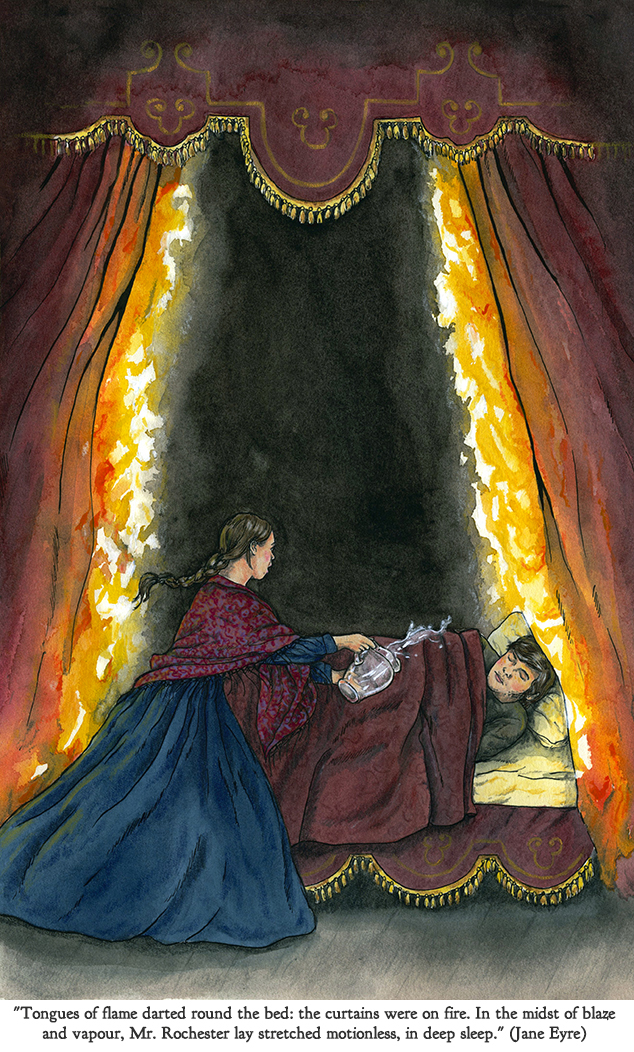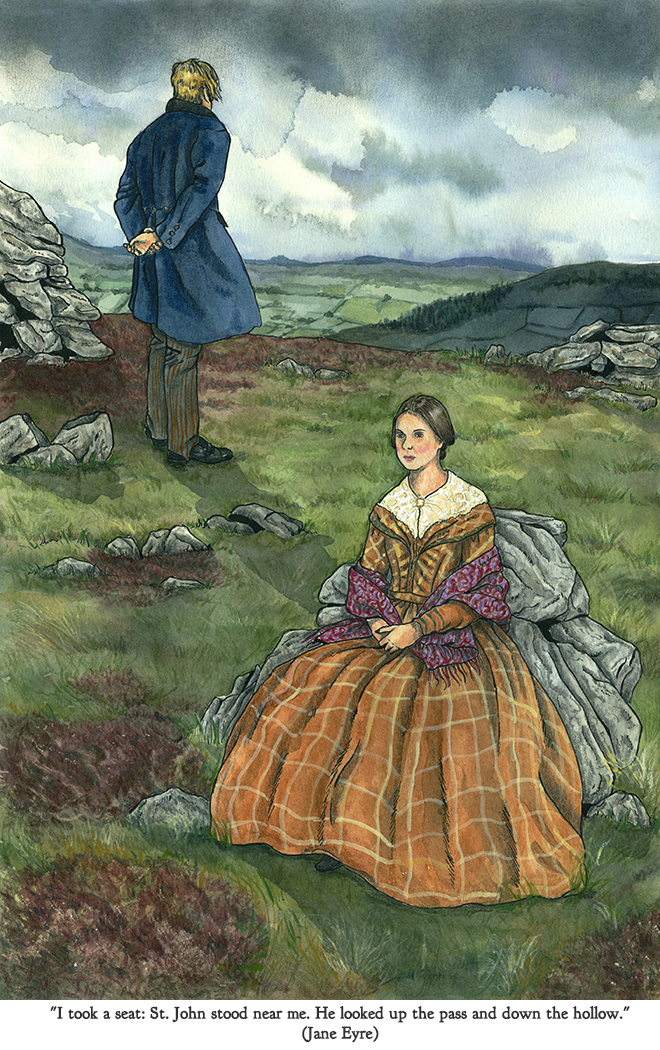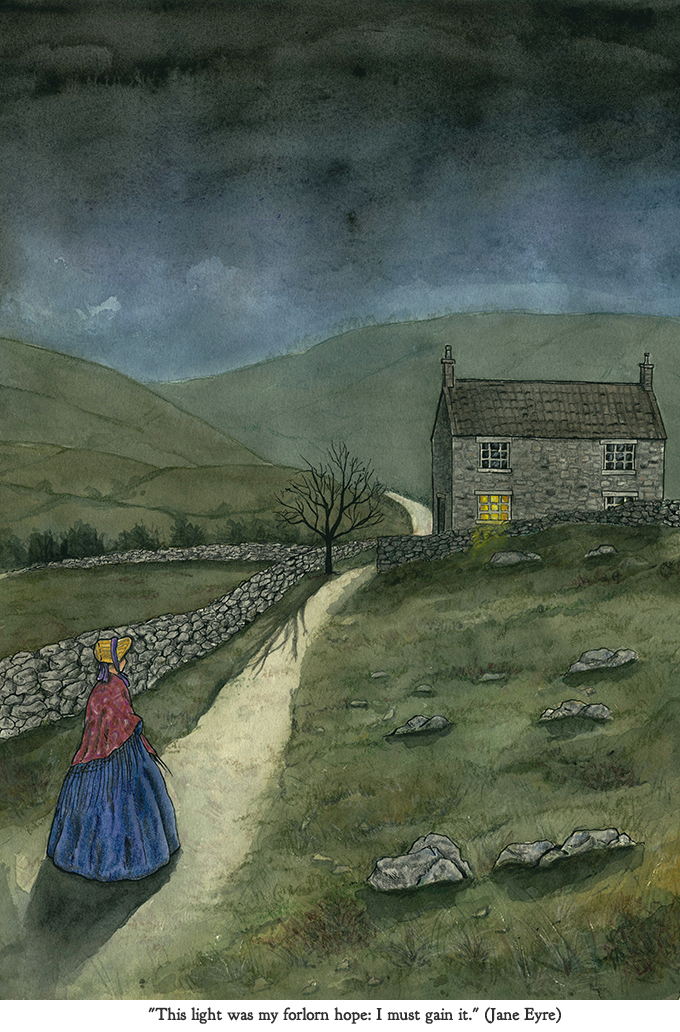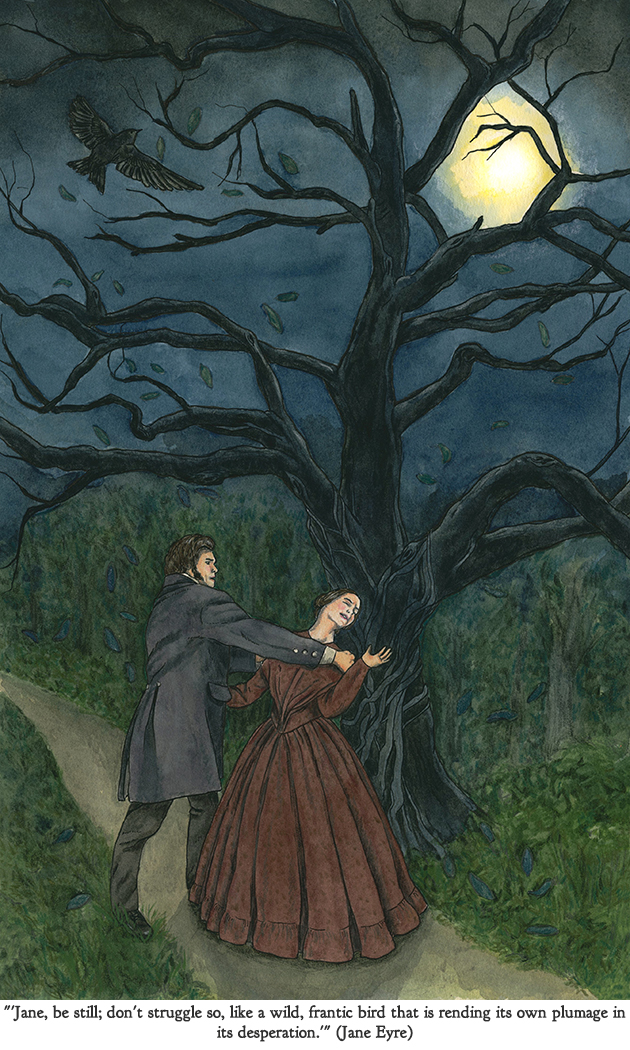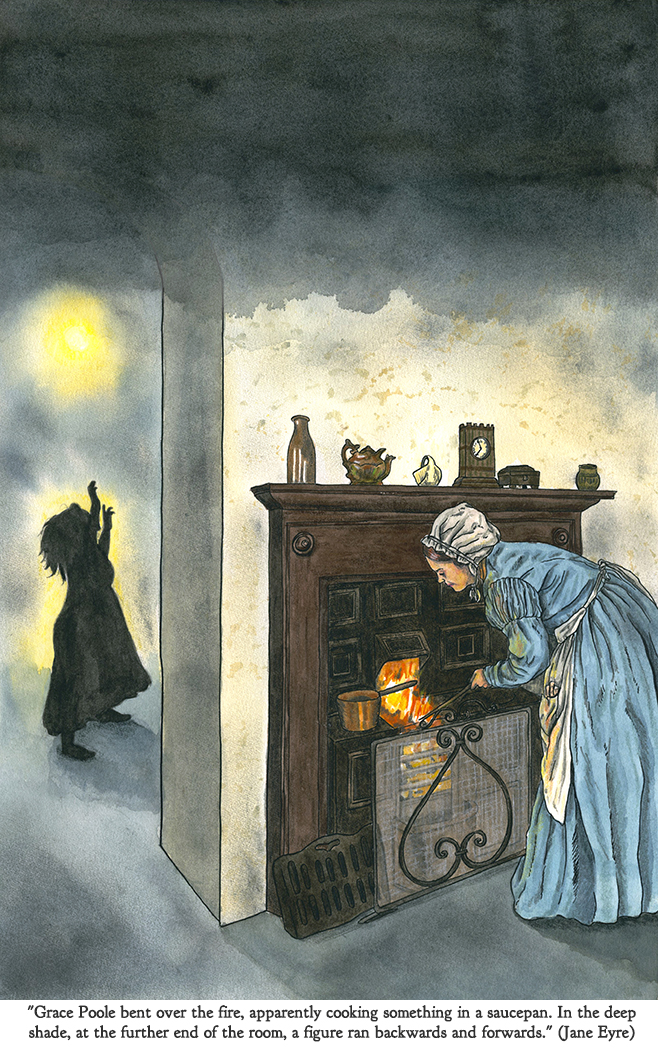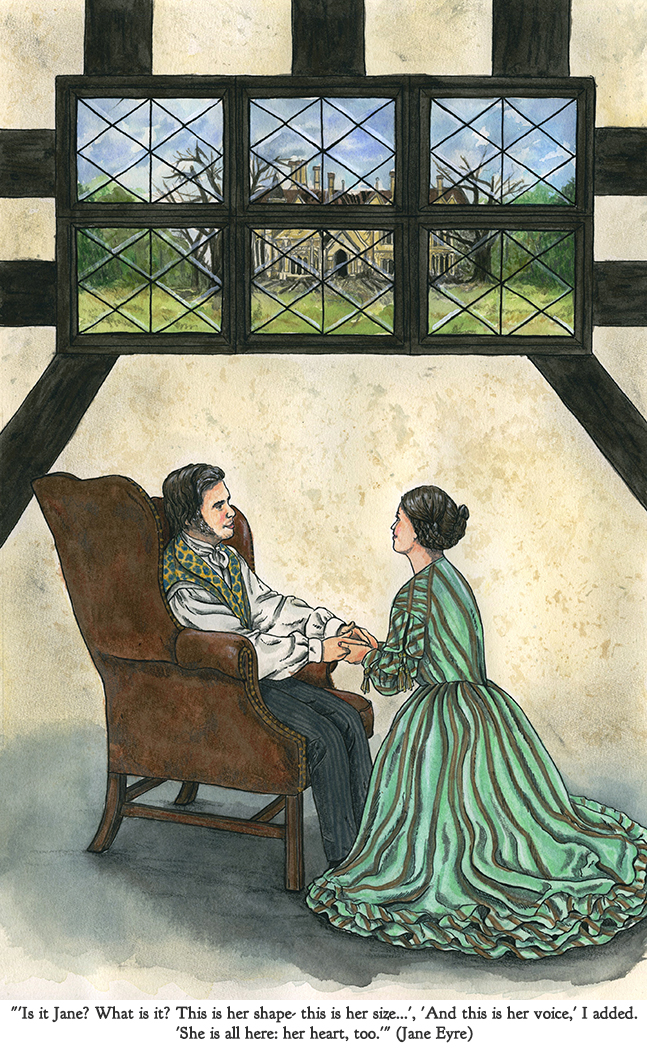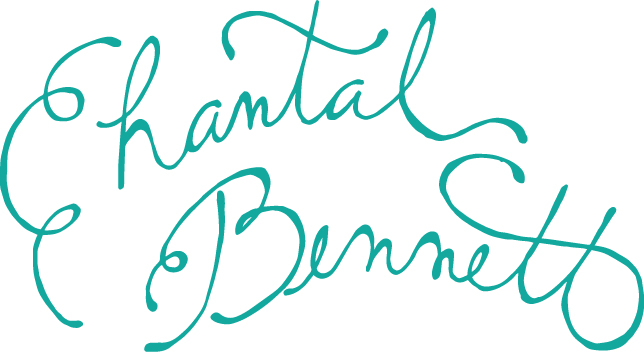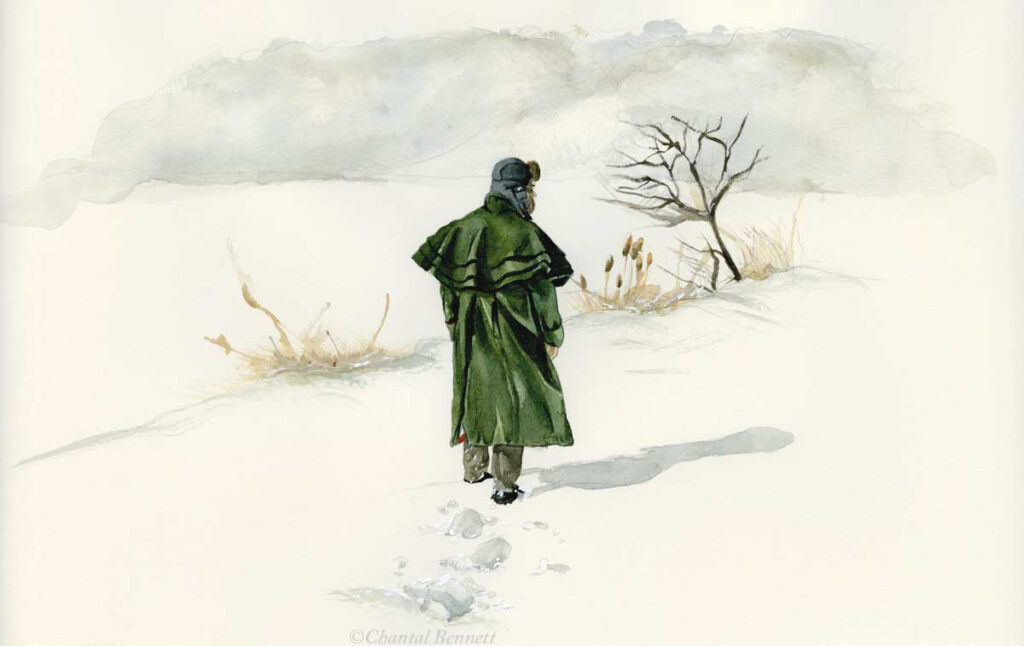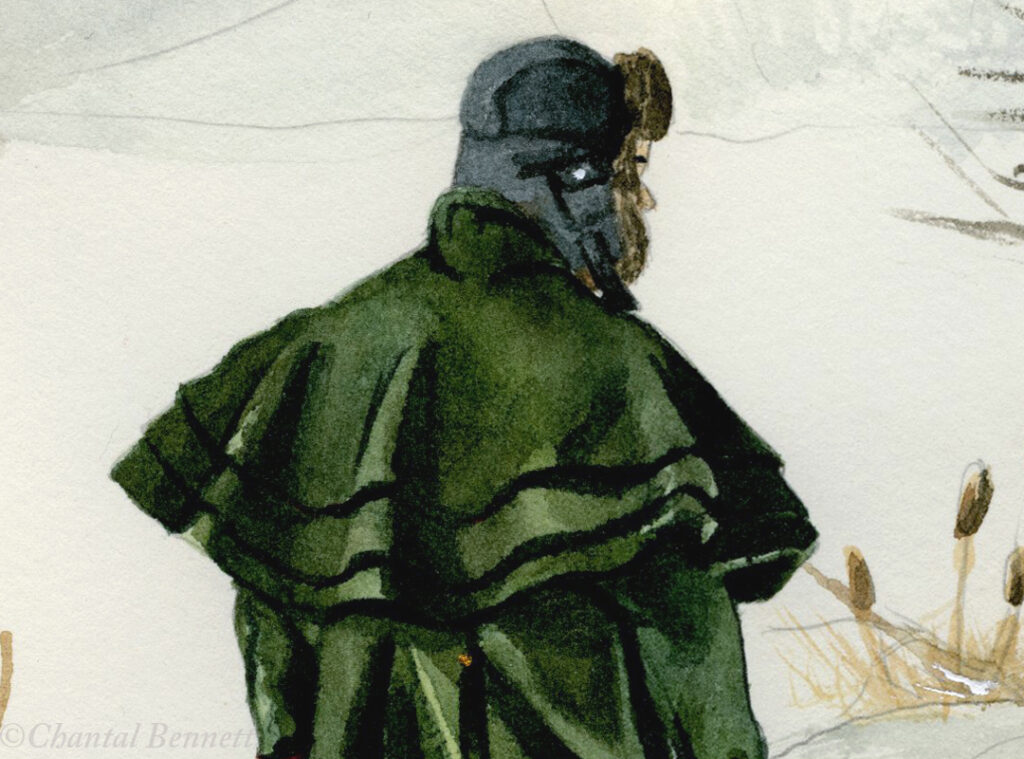More Rhiannon
- Categories: book illustration •
- Tags: book art, book cover, book llustration, chantal bennett, children's book, folklore art, illustration, kid lit art, myth legend, mythic art, mythology, picture book illustration, rhiannon, welsh legend •
- No Comments •
- by cbadmin
I tend to revisit the Welsh legends about Rhiannon over the years. I’ve had this one in my head for awhile now, ever since we visited Conwy Castle in Wales. Here’s my latest Rhiannon illustration, and a few others from years ago:
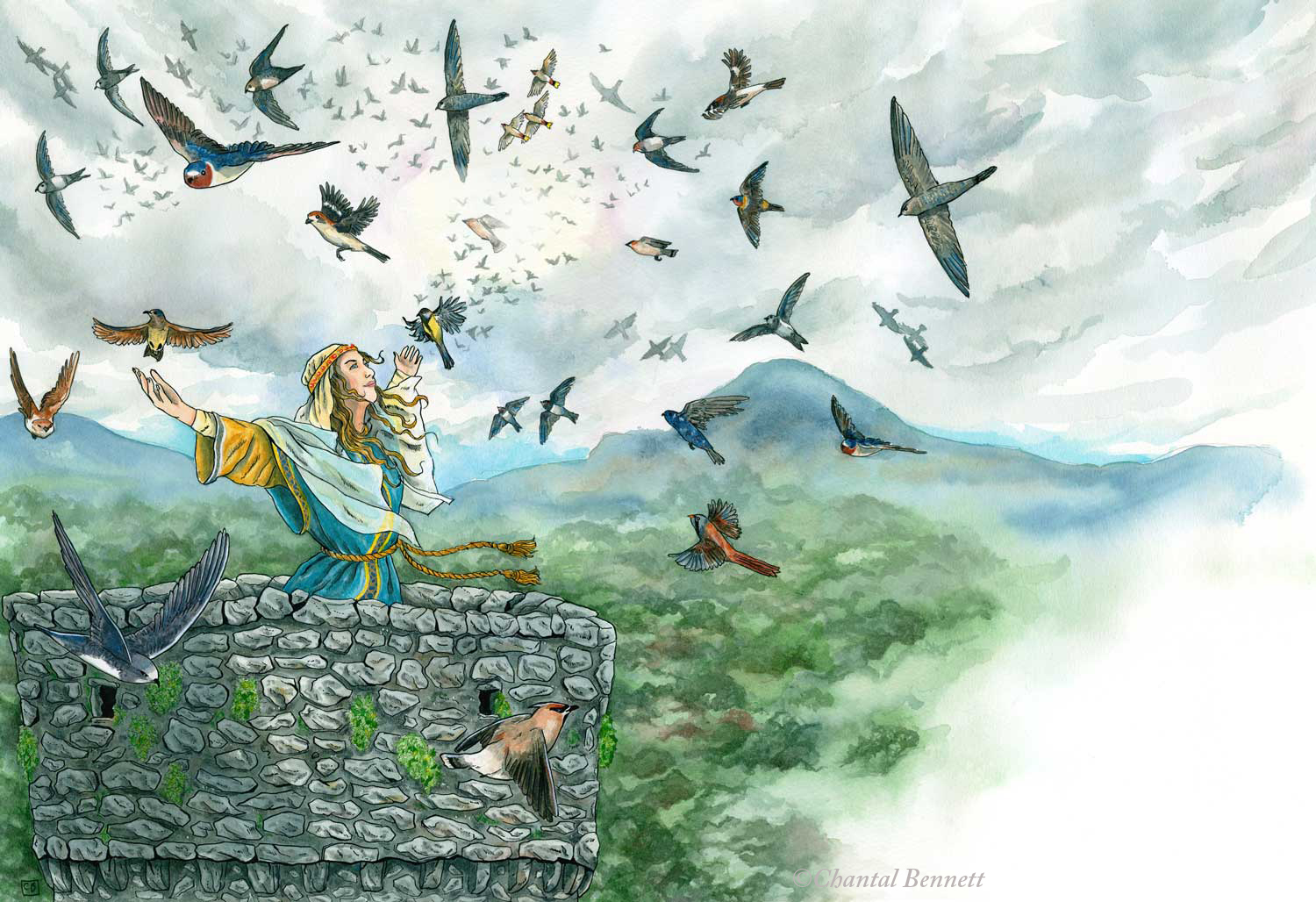
Rhiannon and her birds, 2021.
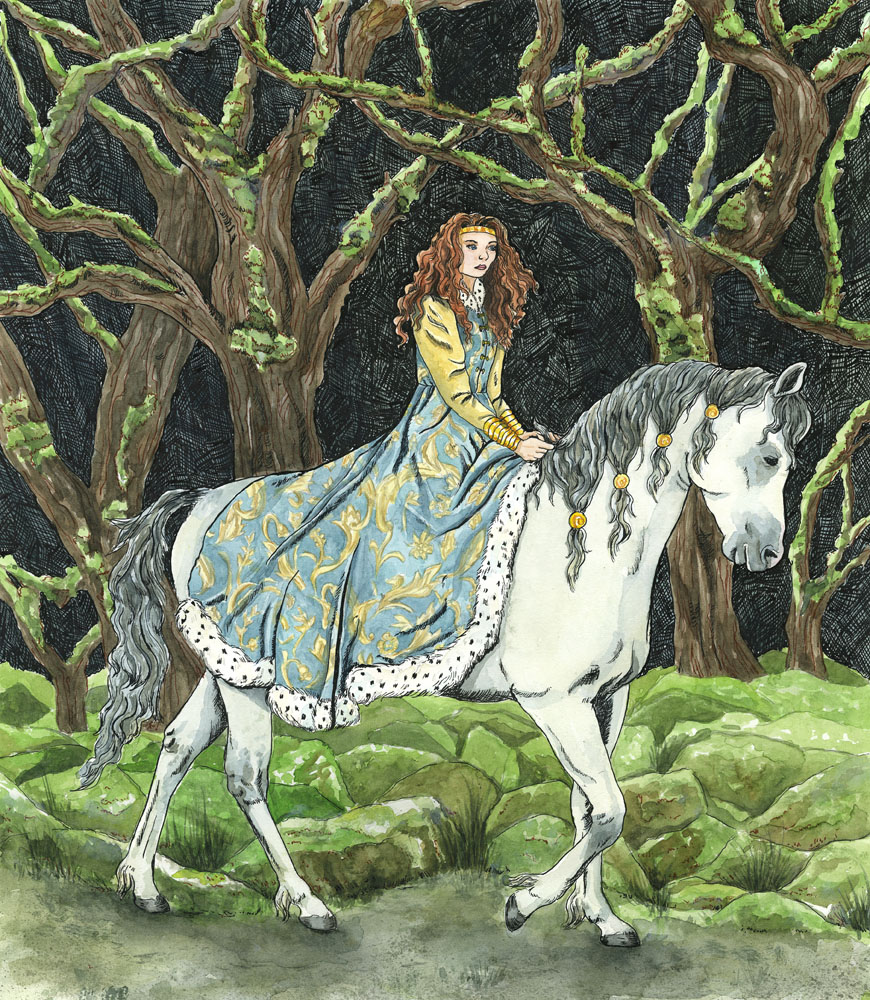
Rhiannon on her pearly steed, 2015. Lots of ink work.
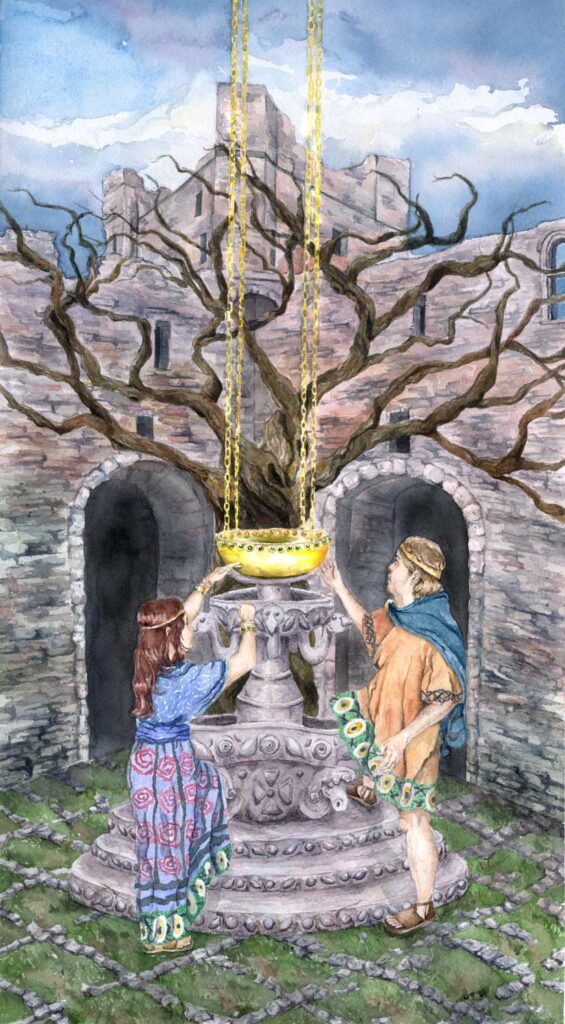
Rhiannon and Pwyll, 2005. Pure watercolour, no ink at all.
Twelve Dancing Princesses
- Categories: book illustration •
- Tags: book illustration, chantal bennett, children's book, fairtytale illustration, fantasy art, Fashion illustration, illustration, illustration canada, princess illustration, twelve dancing princesses, victorian costume, victorian lady, watercolour ink •
- No Comments •
- by cbadmin
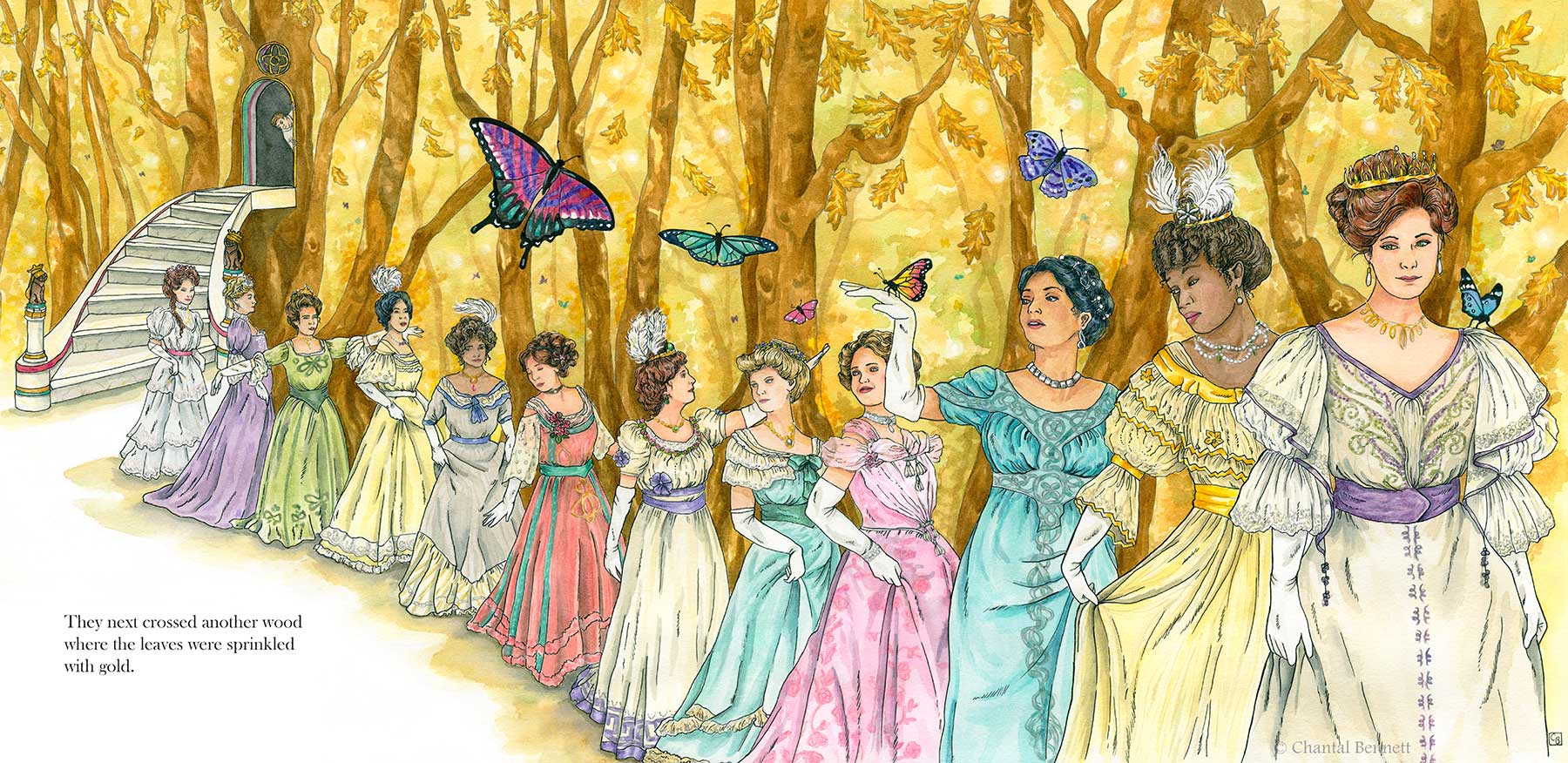
Twelve Dancing Princesses
This piece took me AGES, but it was so much fun. It measures almost an entire sheet of watercolour paper (30″ in width), so I went big with it. I totally indulged in the costume designs, since the fairytale focuses a lot on the fine clothes that the princesses are wearing. I would love to illustrate the entire tale one day.
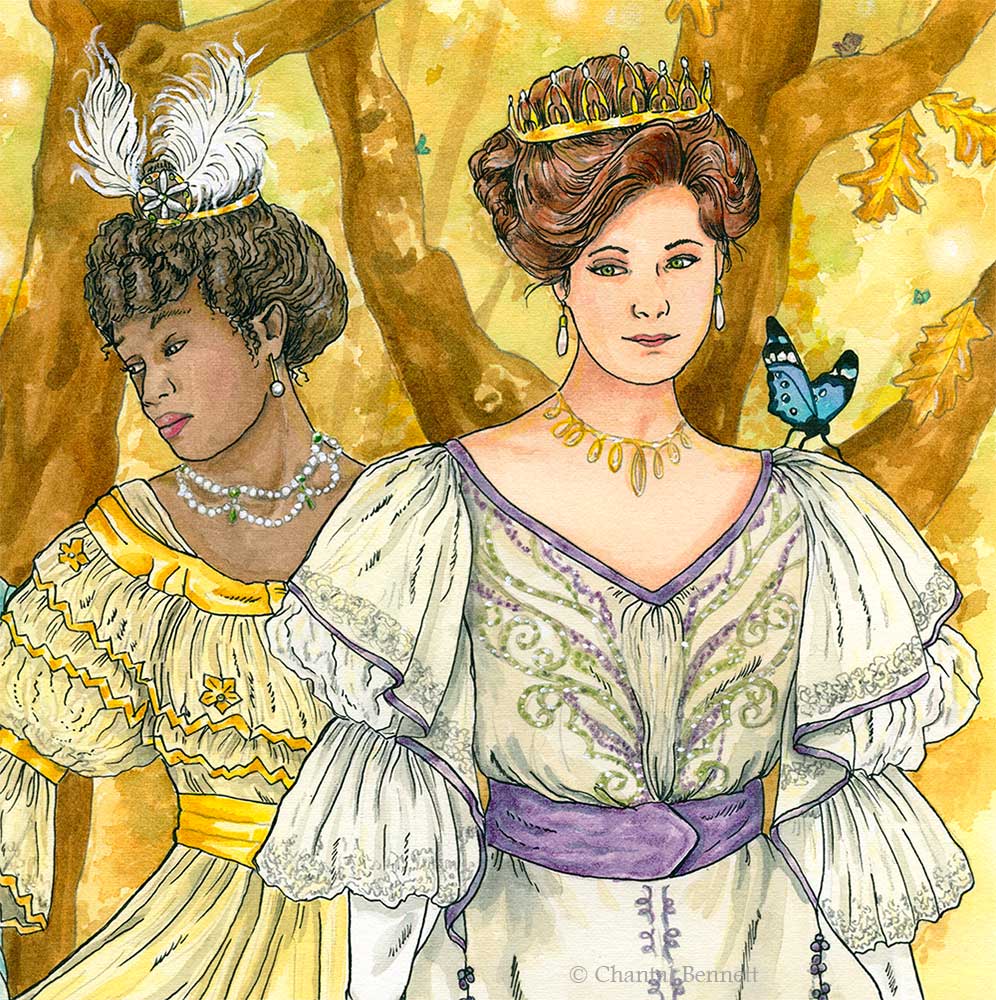
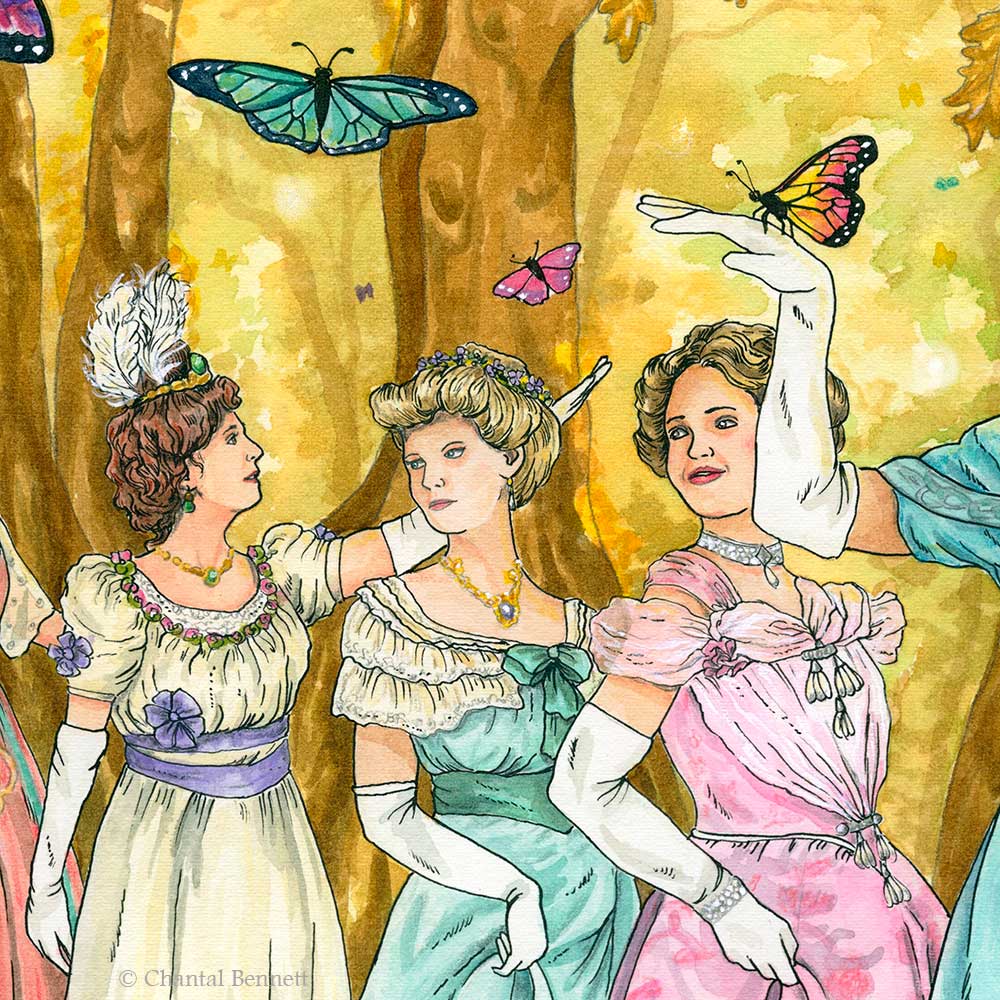
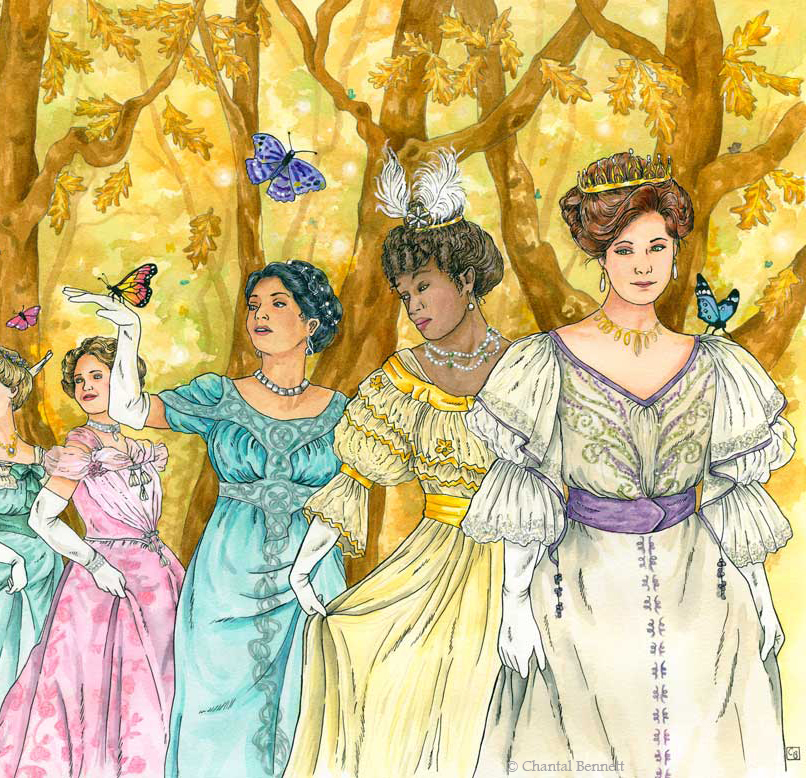
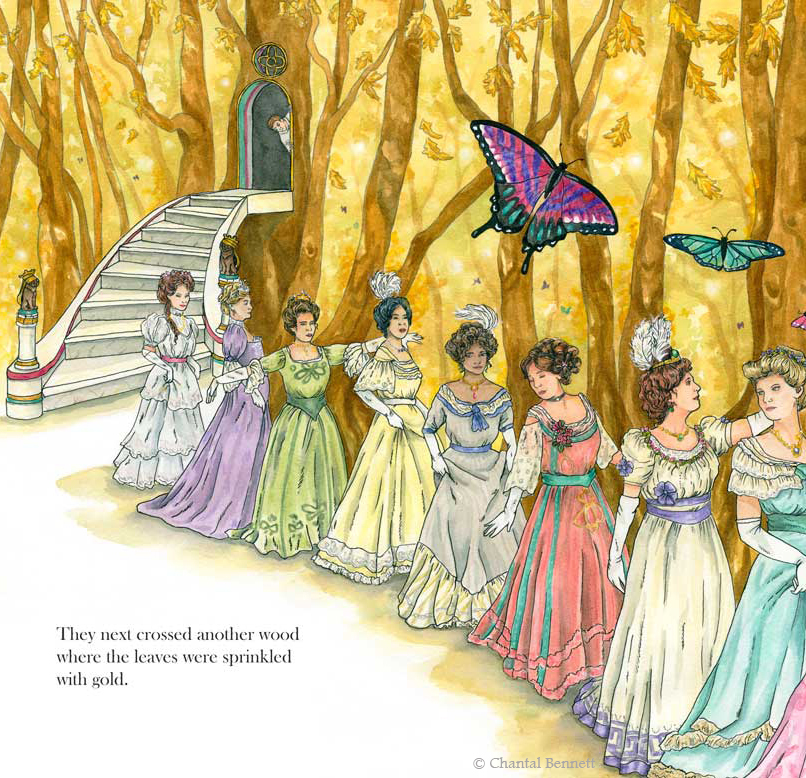
La Madone des bois
- Categories: book illustration •
- Tags: animal art, canada, canadian illustrator, chantal bennett, fantasy art, illustration, westport ontario, woodland animal art •
- No Comments •
- by cbadmin
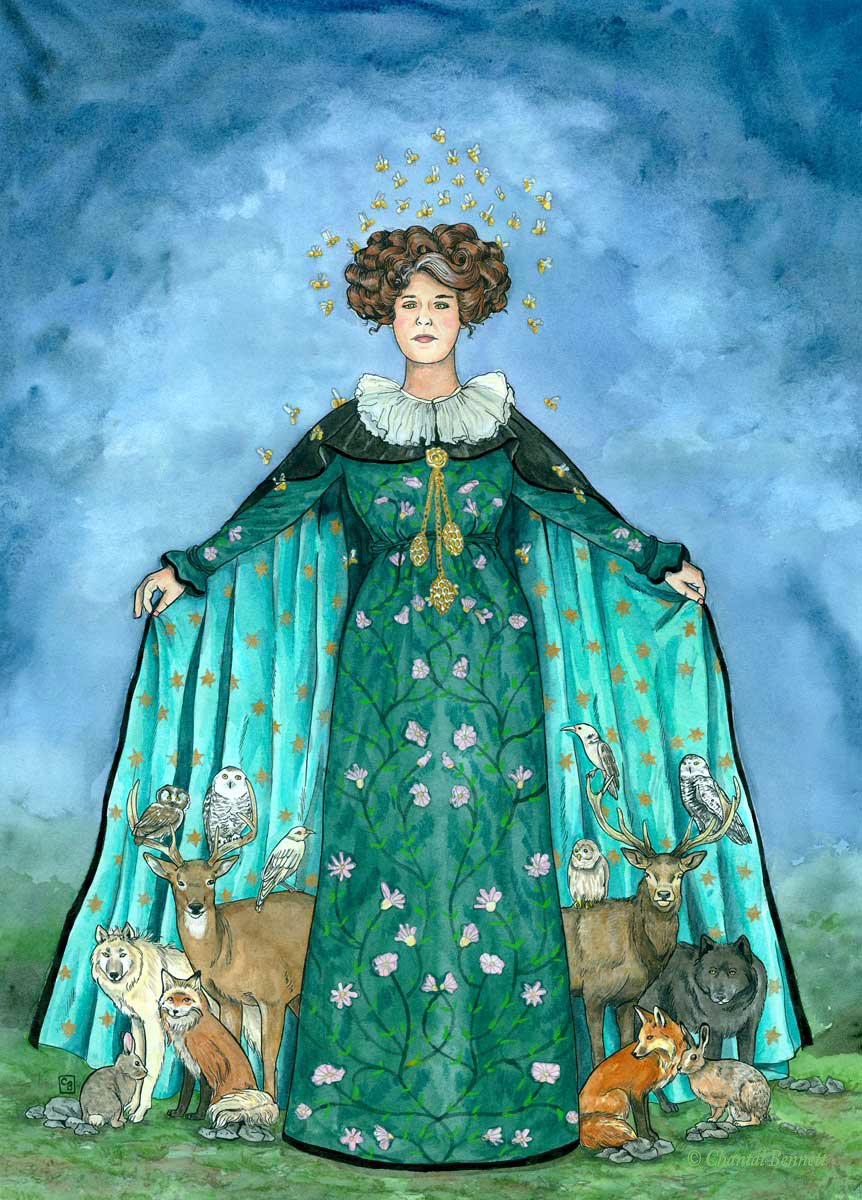
It’s been awhile since I’ve painted on a large scale, so for this piece I opted to go bigger to get all the detail in (16×20″). Inked first then painted in watercolour and gouache.
Lately I’ve been contemplating how humans are so busy being humans, that we forget that we are not the only inhabitants of this place. We forget that we share it with other living beings, and that we should act as their protectors and stewards of their habitat, not as their exploiters. The Great Lockdown has shown that reduced human activity has been a gift to wildlife; locally, from less turtle deaths on the road due to reduce car traffic…to internationally, with orcas being able to communicate properly due to less boat traffic.
Hence this painting, entitled La Madone des bois. It’s inspired by a 15th century Madonna sculpture I saw in Florence last year.
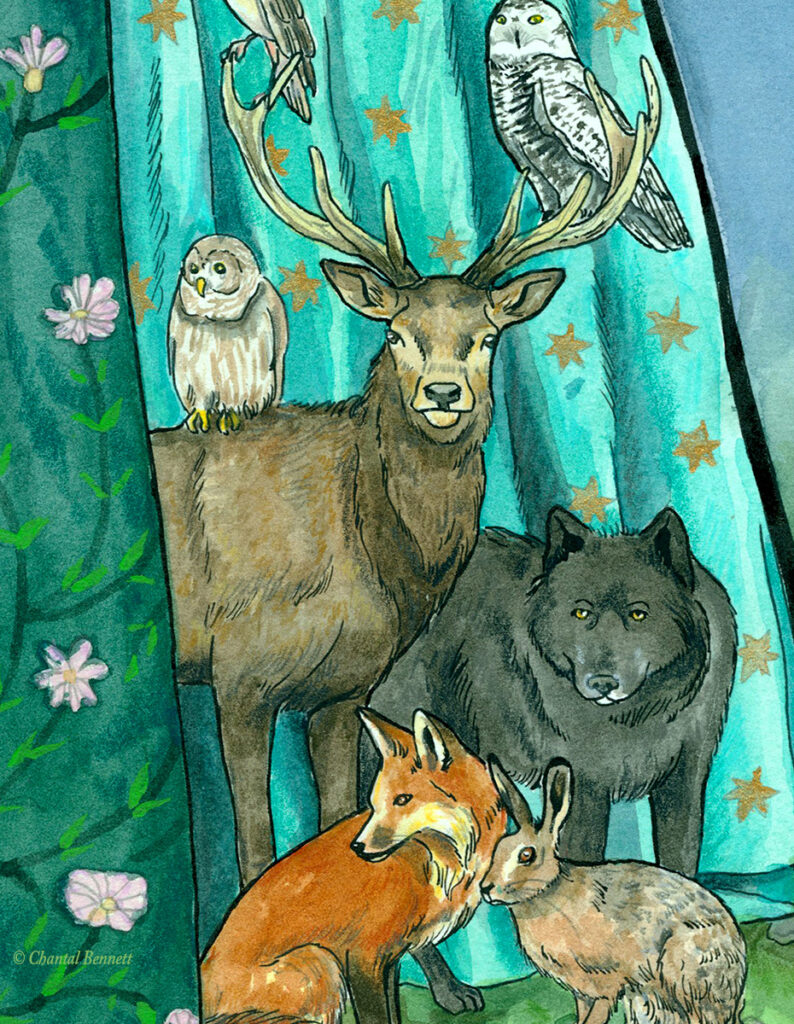
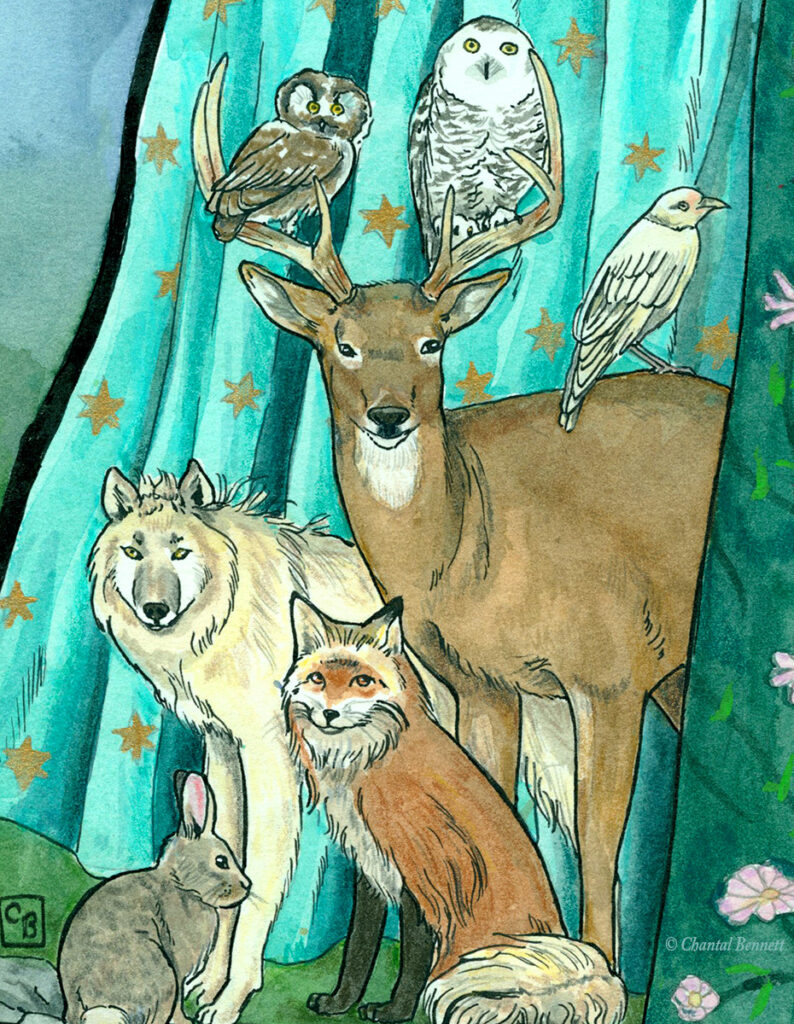
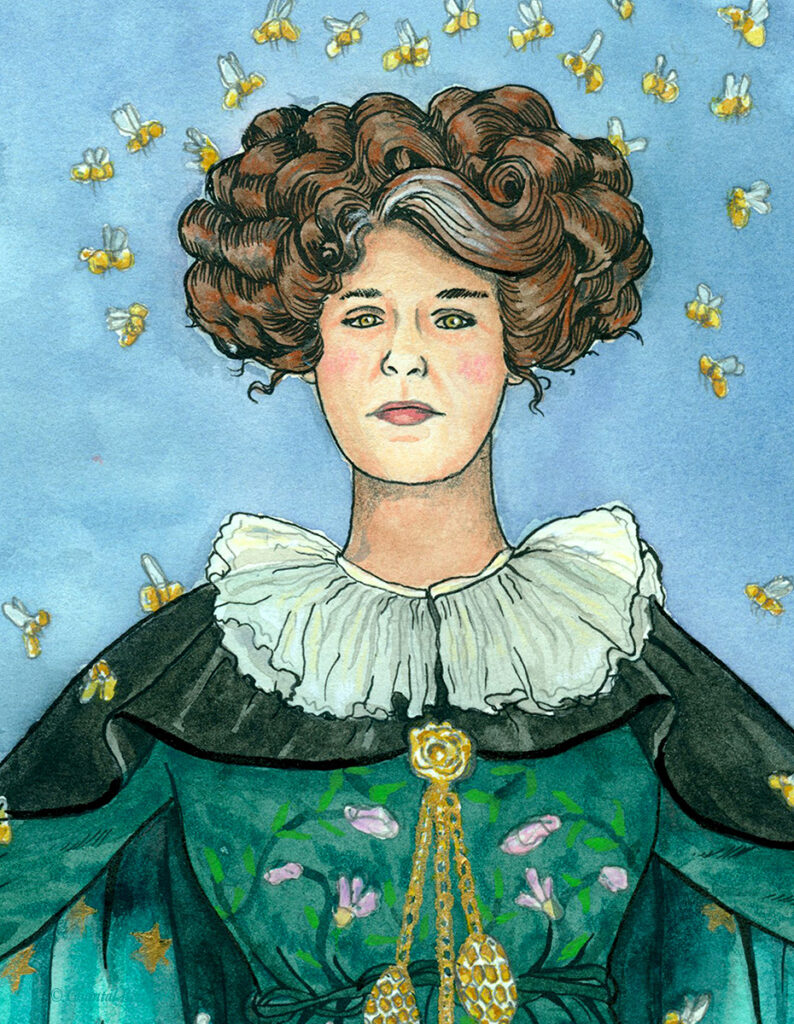
Jane Eyre series
- Categories: book illustration •
- Tags: book illustration, chantal bennett, chantal bennett illustration, charlotte bronte, gothic illustration, gouache, historical illustration, illustration, illustration canada, ink, jane eyre, pen ink, watercolour •
- No Comments •
- by cbadmin
One of the projects I’ve wanted to tackle for a long time has been to do a series of illustrations for Charlotte Brönte’s Jane Eyre. I recently re-read it and was amazed at how good it was. It’s a Victorian page-turner! I’m a big fan of the Victorian gothic imagery and the romantic melodrama. Having recently returned from a trip to England, I was also inspired by the moors, the tors and the hedgerows. Here are the illustrations:
